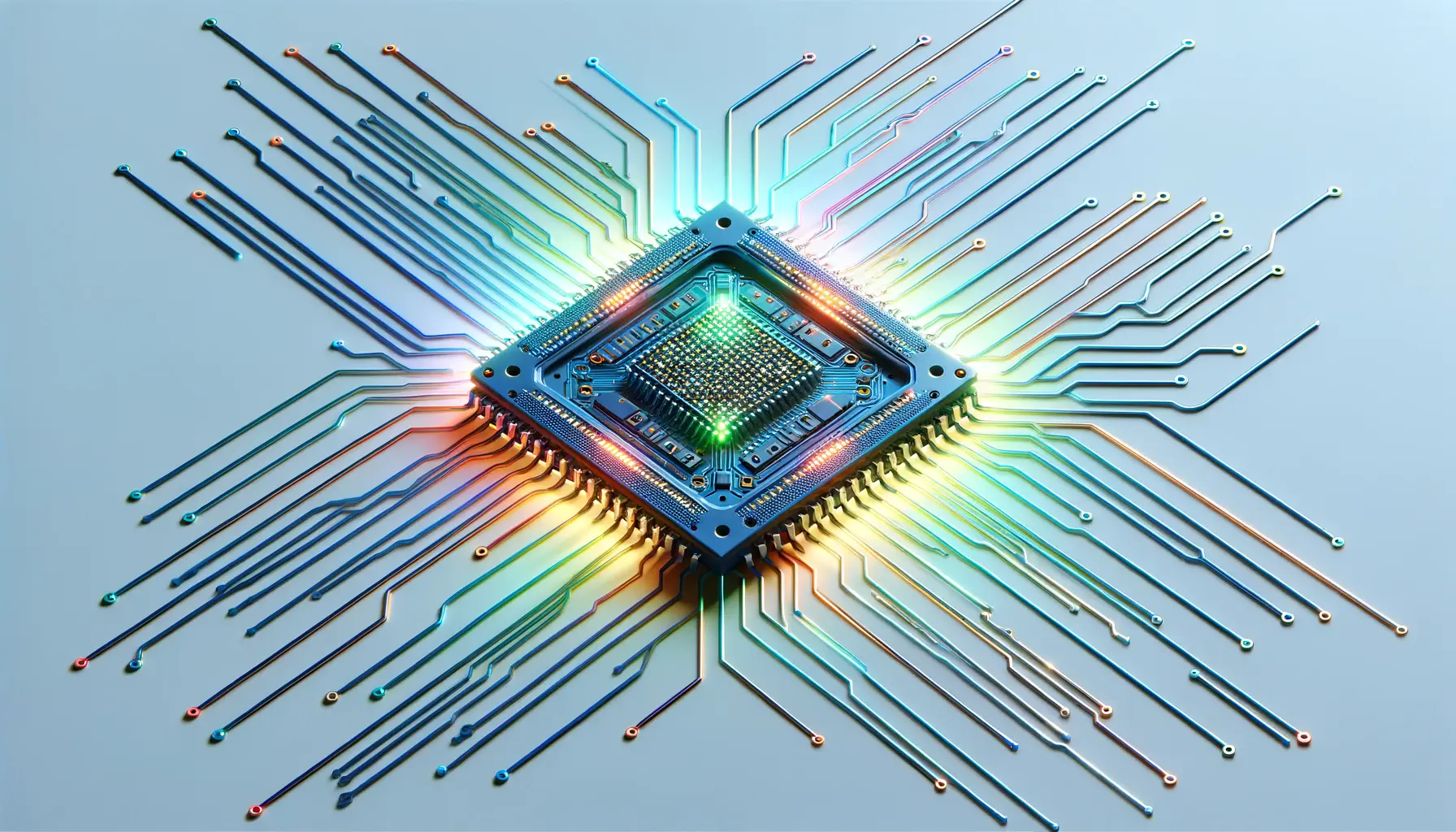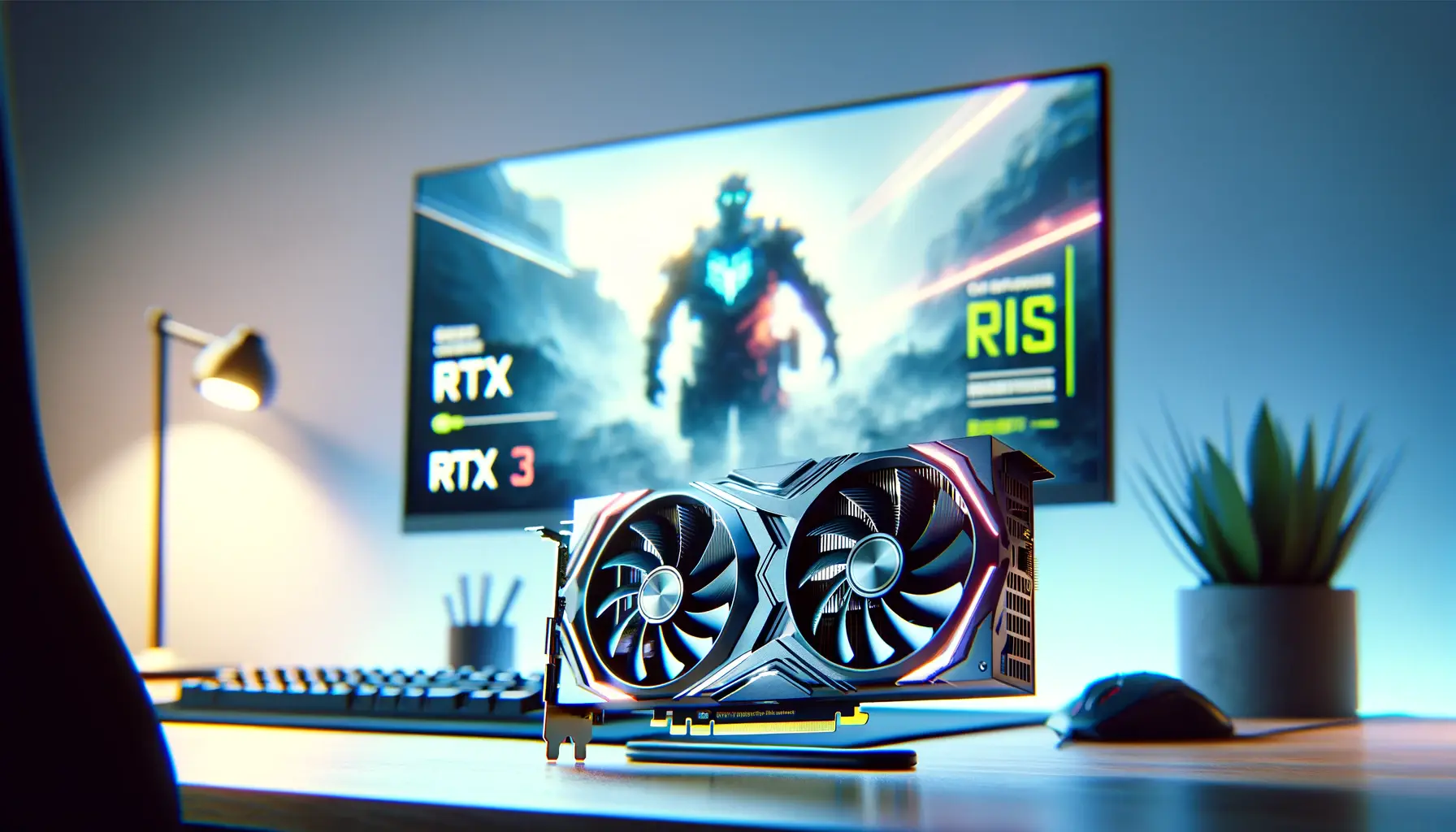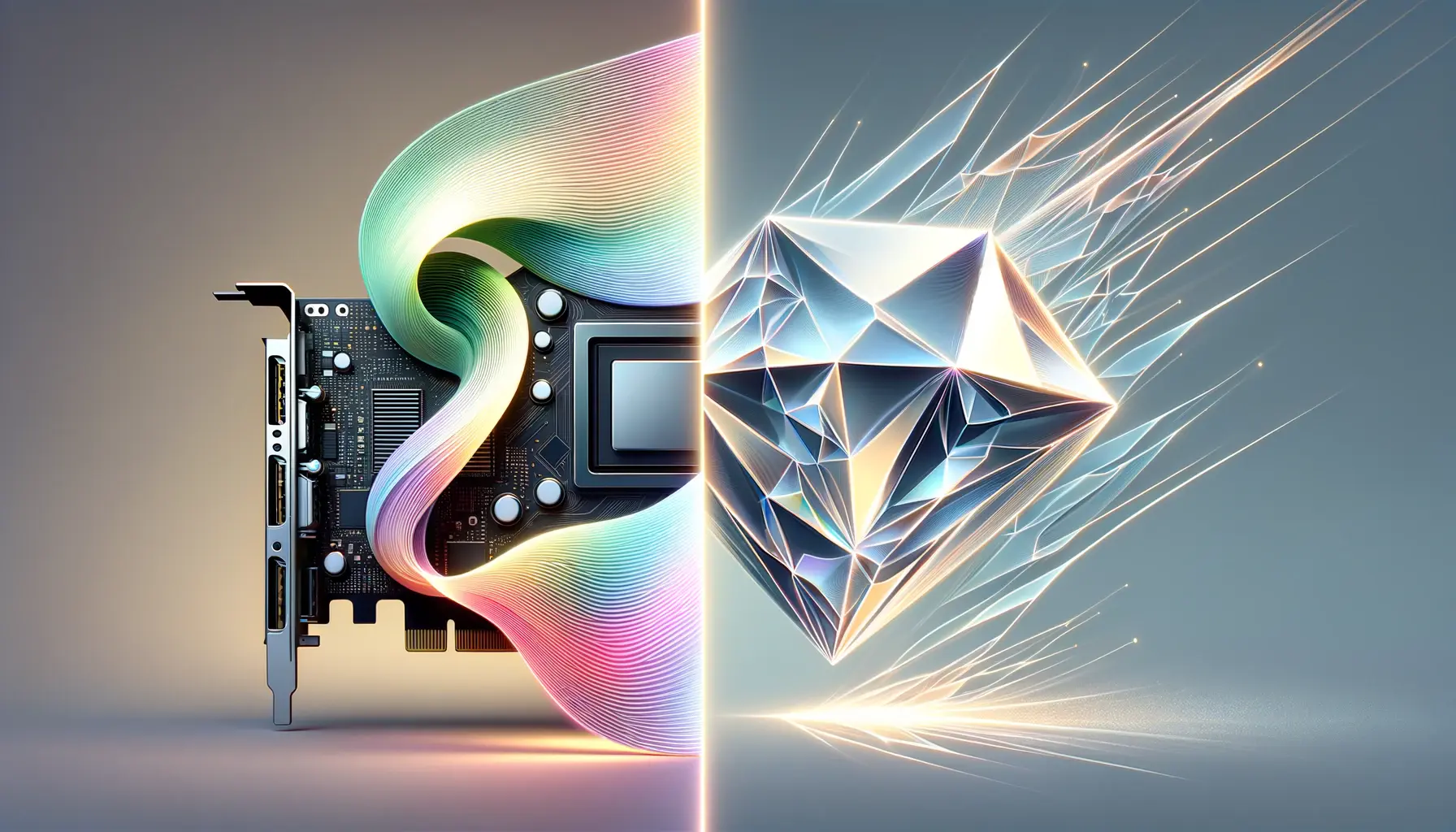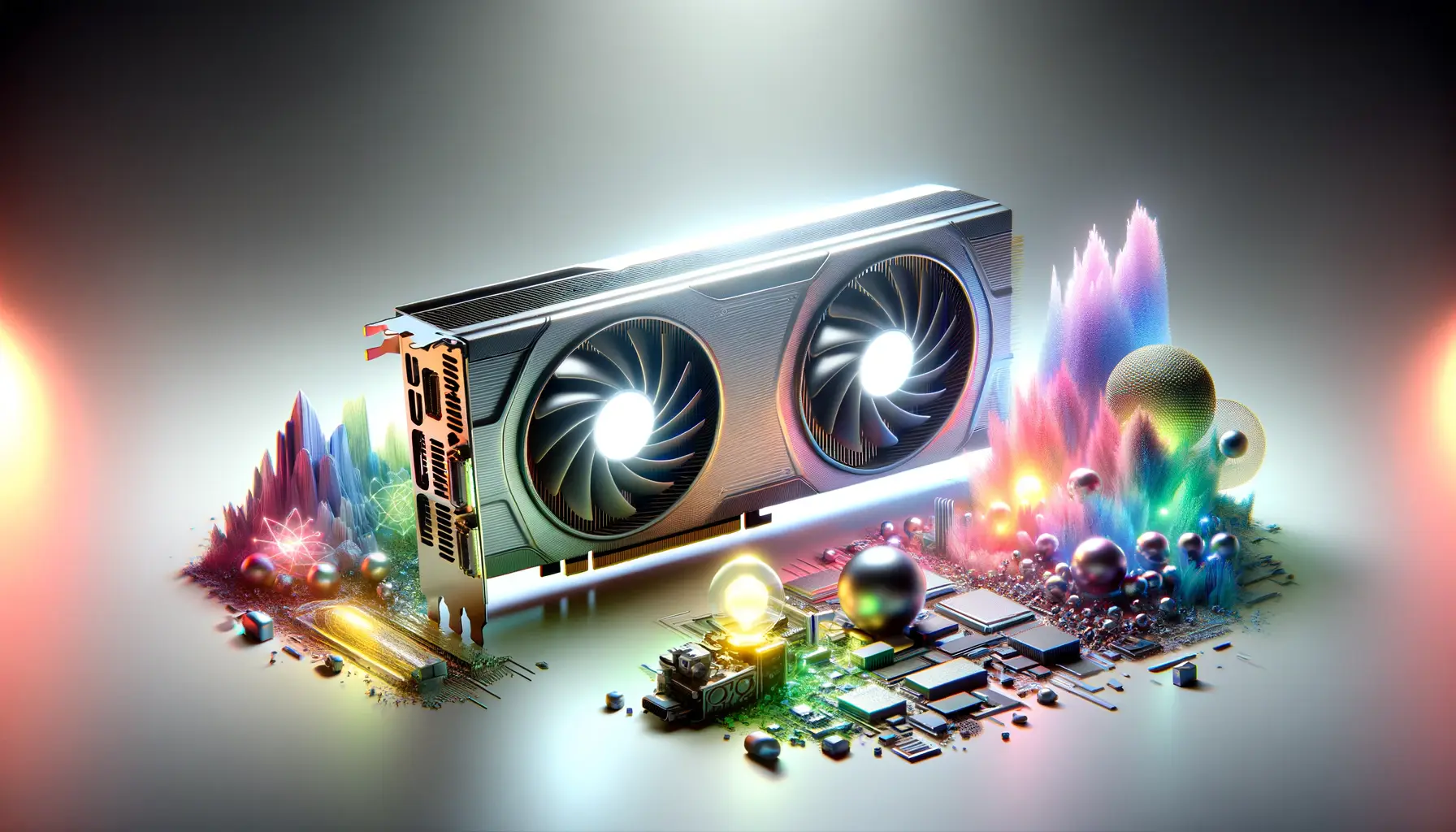The realm of video gaming and graphical rendering is witnessing a monumental shift, thanks to the advent of Deep Learning Super Sampling (DLSS) technology, particularly with its latest iteration, DLSS 3.
This groundbreaking technology, developed by NVIDIA, is at the forefront of the evolution in neural graphics, offering a glimpse into the future of gaming visuals and performance enhancements.
DLSS 3 harnesses the power of artificial intelligence and machine learning to revolutionize the way images are rendered, providing a seamless blend of high-quality graphics and efficiency.
At its core, DLSS 3 aims to address one of the most pressing challenges in modern gaming and graphic design: the trade-off between image quality and performance.
By leveraging neural networks, DLSS 3 intelligently upscales lower-resolution images in real-time, achieving unparalleled image quality without compromising on frame rates.
This evolution marks a significant leap forward from traditional rendering techniques, setting a new standard for visual fidelity and performance in the gaming industry.
- The Foundation of DLSS Technology
- The Technological Marvel Behind DLSS 3
- Integrating DLSS 3 into Game Development
- DLSS 3 and the Future of Gaming Graphics
- Challenges and Considerations in Adopting DLSS 3
- Comparing DLSS 3 with Other Rendering Technologies
- Maximizing Gaming Experience with DLSS 3
- Embracing the Future with DLSS 3
- DLSS 3: Evolution of Neural Graphics FAQs
The Foundation of DLSS Technology
Understanding DLSS and Its Impact
Deep Learning Super Sampling, or DLSS, is a revolutionary technique developed by NVIDIA that utilizes deep neural networks to analyze thousands of images and learn how to produce sharper, more detailed graphics from lower-resolution inputs.
This AI-driven approach allows games to run at higher frame rates while maintaining or even improving visual quality, a feat that was previously thought to be nearly impossible.
The introduction of DLSS has fundamentally changed the landscape of gaming, enabling gamers to experience rich, immersive worlds with fluid motion and stunning detail.
DLSS technology operates by taking a lower-resolution image and intelligently inferring a higher-resolution version of it, filling in the gaps with data learned from high-resolution game frames.
This process not only improves image quality but also significantly boosts performance, allowing games to run smoothly on a wider range of hardware.
The impact of DLSS extends beyond just gaming; it represents a broader shift towards AI and machine learning applications in real-time graphics rendering, paving the way for future innovations in the field.
Evolution from DLSS 1.0 to DLSS 3.0
The journey from DLSS 1.0 to the latest DLSS 3.0 showcases NVIDIA’s commitment to continuous improvement and innovation.
Each iteration of DLSS has brought about significant advancements in image quality and performance.
DLSS 1.0 laid the groundwork, introducing the concept of AI-based rendering.
However, it was with DLSS 2.0 and its successors that the technology truly came into its own, offering greater flexibility, improved image quality, and broader game support.
DLSS 2.0’s use of a generalized AI model meant that it could be applied to any game with minimal effort from developers, a major step forward in making the technology more accessible and widely adopted.
DLSS 3.0, however, represents a quantum leap in the technology’s evolution.
It introduces several new features, including frame generation and reflex technology, which work together to deliver even higher frame rates and reduced latency.
These improvements not only enhance the gaming experience but also demonstrate the potential of neural graphics to transform the entire visual landscape of video games.
The evolution of DLSS is a testament to the power of AI in driving forward the capabilities of real-time rendering, offering a glimpse into a future where games are more realistic and immersive than ever before.
DLSS 3 harnesses AI to redefine gaming visuals, balancing high-quality graphics with performance efficiency.
The Technological Marvel Behind DLSS 3
The innovation of DLSS 3 by NVIDIA is not just a step forward; it’s a leap into the future of gaming and graphics rendering.
This section delves into the sophisticated technology that powers DLSS 3, highlighting its components, functionality, and the groundbreaking impact it has on the gaming industry.
Understanding the mechanics behind DLSS 3 reveals why it’s considered a marvel in the world of neural graphics and artificial intelligence.
DLSS 3’s core technology revolves around two primary components: the AI-powered Frame Generation and the NVIDIA Reflex technology.
Together, these elements work in harmony to produce a gaming experience that’s both visually stunning and highly responsive.
AI-Powered Frame Generation
At the heart of DLSS 3’s breakthrough capabilities is its AI-powered Frame Generation.
This feature represents a significant advancement over previous versions, enabling the system to generate intermediate frames in a sequence, effectively increasing the frame rate without the need for additional hardware power.
The process involves:
- Analyzing consecutive frames to understand the motion and changes occurring within the game scene.
- Using a deep learning model to predict and generate new frames that smoothly transition between the original ones, creating the illusion of a higher frame rate.
- Reducing the workload on the GPU, allowing it to allocate resources to other tasks, thereby enhancing overall game performance.
NVIDIA Reflex Technology
NVIDIA Reflex technology complements the Frame Generation by significantly reducing system latency, ensuring that the actions taken by the player are reflected on the screen almost instantaneously.
This is crucial for competitive gaming, where every millisecond counts.
Reflex achieves this by:
- Optimizing the rendering pipeline across the CPU and GPU to decrease latency.
- Ensuring that frames are generated and displayed at the right moment, aligning the game’s internal processing with the display’s refresh rate.
The combination of these technologies within DLSS 3 not only enhances the visual fidelity of games but also improves their playability, making for a more immersive and responsive gaming experience.
This technological marvel has set a new benchmark for what’s possible in real-time graphics rendering, pushing the boundaries further than ever before.
DLSS 3’s Frame Generation and NVIDIA Reflex are pivotal in achieving high-quality, responsive gaming experiences.
Integrating DLSS 3 into Game Development
The integration of DLSS 3 into game development marks a transformative period for creators and developers, offering them new tools and possibilities for enhancing game performance and visual quality.
This integration process not only involves technical adaptation but also a creative rethinking of how games are designed and presented.
By embracing DLSS 3, developers can push the boundaries of current gaming experiences, making them more immersive and visually captivating than ever before.
Adopting DLSS 3 into the development pipeline requires an understanding of its capabilities and how it can be leveraged to improve game design.
NVIDIA provides comprehensive support and resources to developers, ensuring that integrating DLSS 3 is as seamless as possible.
The key aspects of this integration include:
Technical Implementation
The technical implementation of DLSS 3 into a game’s development process involves several steps, tailored to enhance the game’s performance and visual output efficiently.
Developers must:
- Work with NVIDIA’s SDKs to incorporate DLSS technology into their game engines, ensuring compatibility and optimal performance.
- Adjust game settings and configurations to take full advantage of DLSS 3’s frame generation and reflex technologies, optimizing for both high-quality visuals and low latency.
- Test and iterate on the implementation, using NVIDIA’s tools to fine-tune the game’s performance across a range of hardware configurations.
Enhancing Game Aesthetics with DLSS 3
Beyond the technical benefits, DLSS 3 offers developers the opportunity to enhance the aesthetic qualities of their games.
By utilizing DLSS 3, developers can:
- Increase the game’s resolution and detail without sacrificing performance, allowing for more complex and detailed game worlds.
- Improve shadow, lighting, and texture quality, making the game environments more realistic and immersive.
- Experiment with advanced graphical effects that were previously too performance-intensive, opening new avenues for creative expression.
The integration of DLSS 3 into game development signifies a major leap forward in the creation of visually stunning and smooth-running games.
It empowers developers to realize their creative visions without being constrained by hardware limitations, heralding a new era of game design that prioritizes both aesthetics and performance.
Embracing DLSS 3 in game development unlocks new creative possibilities and sets a new standard for visual fidelity and performance.
DLSS 3 and the Future of Gaming Graphics
The advent of DLSS 3 technology heralds a new era in gaming graphics, setting the stage for what could be the future of visual rendering in video games.
As developers and gamers alike begin to embrace the capabilities offered by DLSS 3, the potential for transformative changes in the gaming industry becomes increasingly apparent.
This technology not only enhances current gaming experiences but also opens up possibilities for future innovations in game design and development.
DLSS 3’s impact on gaming graphics is profound, offering a glimpse into a future where games are not only more visually stunning but also more immersive and responsive.
The implications of this technology extend beyond mere aesthetic improvements, suggesting a shift towards more intelligent, AI-driven approaches to game rendering and performance optimization.
Enhancing Realism and Immersion
One of the most exciting prospects of DLSS 3 technology is its ability to significantly enhance the realism and immersion of gaming environments.
By intelligently generating high-quality frames, DLSS 3 allows for:
- Increased detail and clarity in game textures, making virtual worlds more lifelike and engaging.
- Improved lighting and shadow effects, adding depth and realism to the gaming experience.
- Higher frame rates and smoother gameplay, ensuring that players feel more connected to the game world.
Enabling New Gaming Experiences
DLSS 3 not only improves existing gaming experiences but also enables new ones.
With the enhanced performance and efficiency provided by DLSS 3, developers can:
- Design more complex and dynamic game worlds without worrying about performance bottlenecks.
- Incorporate advanced AI and physics simulations, creating more interactive and responsive environments.
- Explore new genres and gameplay mechanics that were previously impractical due to hardware limitations.
The future of gaming graphics, shaped by DLSS 3 and similar technologies, promises to bring unprecedented levels of realism and immersion to video games.
As we stand on the brink of this new frontier, it’s clear that the evolution of neural graphics will continue to drive innovation and creativity in the gaming industry for years to come.
DLSS 3 is not just an enhancement to gaming graphics; it’s a catalyst for new gaming experiences and a beacon for the future of game development.
Challenges and Considerations in Adopting DLSS 3
While DLSS 3 presents a significant advancement in gaming technology, its adoption is not without challenges and considerations.
Developers and gamers alike must navigate various factors to fully leverage the benefits of DLSS 3.
Understanding these challenges is crucial for the successful integration and utilization of this technology in the gaming landscape.
The transition to DLSS 3 technology, although promising, requires careful consideration of several technical and practical aspects.
These considerations play a pivotal role in determining the extent to which DLSS 3 can be effectively implemented and embraced within the gaming community.
Hardware Compatibility and Accessibility
One of the primary challenges in adopting DLSS 3 lies in hardware compatibility and accessibility.
DLSS 3 requires:
- Support from the latest NVIDIA GPUs, which may not be available to all gamers due to cost or supply constraints.
- A consideration of the broader gaming audience, including those with older or less powerful hardware, to ensure inclusive gaming experiences.
Development Complexity and Resource Allocation
For game developers, integrating DLSS 3 into games involves:
- Navigating the complexities of implementing AI-driven technologies within existing game engines and workflows.
- Allocating additional resources for testing and optimization to ensure that DLSS 3 functions seamlessly across a wide range of game scenarios and hardware configurations.
Ensuring Consistent Gaming Experiences
Another consideration is the need to ensure consistent gaming experiences across all platforms and devices.
This includes:
- Maintaining visual fidelity and performance standards whether DLSS 3 is enabled or not.
- Addressing potential discrepancies in game playability and competitiveness, especially in multiplayer settings.
Despite these challenges, the potential benefits of DLSS 3 for enhancing gaming graphics and performance are undeniable.
By addressing these considerations, developers and gamers can unlock the full potential of DLSS 3, paving the way for a new era of immersive and visually stunning gaming experiences.
Addressing the challenges of DLSS 3 adoption is essential for harnessing its full potential in game development and playability.
Comparing DLSS 3 with Other Rendering Technologies
In the evolving landscape of gaming graphics, DLSS 3 stands out as a pioneering technology, but it’s not without competition.
Other rendering technologies, each with their unique approaches and benefits, also aim to enhance gaming visuals and performance.
A comparative analysis of DLSS 3 with these technologies sheds light on the diverse strategies developers can employ to achieve the best gaming experience.
Understanding the distinctions between DLSS 3 and its counterparts is crucial for developers and gamers alike, as it influences decision-making regarding game development and hardware purchases.
This comparison highlights the strengths and limitations of DLSS 3 in the broader context of rendering technologies.
DLSS 3 vs. Traditional Upscaling
Traditional upscaling techniques, such as bilinear or bicubic interpolation, simply enlarge the pixels of a lower-resolution image to fit a higher-resolution display.
While this process can make games playable on higher-resolution screens, it often results in blurred textures and a lack of detail.
DLSS 3, on the other hand, uses deep learning to intelligently generate high-resolution images from lower-resolution inputs, preserving detail and clarity without the significant performance hit associated with native high-resolution rendering.
DLSS 3 vs. AMD FidelityFX Super Resolution (FSR)
AMD’s FidelityFX Super Resolution (FSR) is another upscaling technology designed to improve frame rates and image quality.
Unlike DLSS 3, FSR does not rely on AI or deep learning but instead uses a spatial upscaling algorithm.
While FSR can offer performance improvements across a wider range of hardware, including GPUs from both AMD and NVIDIA, it may not achieve the same level of image quality enhancement as DLSS 3, particularly in terms of generating new image details.
DLSS 3 vs. Ray Tracing
Ray tracing is a rendering technique that simulates the physical behavior of light to produce highly realistic images.
While not an upscaling technology, it’s often discussed in conjunction with DLSS 3 due to the performance demands of ray-traced graphics.
DLSS 3 can complement ray tracing by allowing games to utilize this demanding rendering technique while maintaining higher frame rates, thanks to its AI-driven frame generation and upscaling capabilities.
In summary, DLSS 3 represents a unique approach to enhancing gaming graphics and performance, leveraging AI to achieve results that traditional upscaling and even other advanced technologies like FSR cannot match.
Its ability to work alongside ray tracing further underscores its value in pushing the boundaries of what’s possible in game visuals.
Assuming all upscaling technologies offer similar benefits without considering their underlying mechanisms can lead to misconceptions about their effectiveness and applicability.
Maximizing Gaming Experience with DLSS 3
DLSS 3 is not just a technological advancement; it’s a gateway to maximizing the gaming experience for players worldwide.
By intelligently leveraging AI to enhance graphics and performance, DLSS 3 offers gamers the opportunity to dive into their favorite worlds with unprecedented detail and smoothness.
Understanding how to make the most of DLSS 3 can transform the way games are played and enjoyed.
For gamers looking to elevate their gaming sessions, several strategies can be employed to harness the full potential of DLSS 3.
These approaches ensure that players not only witness the visual enhancements brought by DLSS 3 but also enjoy a more immersive and responsive gaming experience.
Optimizing Settings for DLSS 3
To maximize the benefits of DLSS 3, gamers should:
- Adjust in-game settings to enable DLSS 3, often found in the graphics or display options menu of supported games.
- Experiment with different DLSS modes (Quality, Balanced, Performance) to find the perfect balance between image quality and frame rate for their specific hardware setup.
Choosing the Right Hardware
While DLSS 3 offers significant performance improvements, having the right hardware is crucial:
- Invest in NVIDIA RTX series GPUs that support DLSS 3 to experience the full extent of its capabilities.
- Ensure that the rest of the gaming setup, including the CPU and memory, is capable of keeping up with the GPU to avoid bottlenecks.
Staying Updated
Keeping software and drivers up to date is essential for DLSS 3:
- Regularly update graphics drivers through the NVIDIA GeForce Experience app or the NVIDIA website to receive the latest optimizations and support for DLSS 3.
- Check for game patches and updates that may improve DLSS 3 performance or expand its availability to more titles.
By optimizing settings, choosing the right hardware, and staying updated, gamers can unlock the full potential of DLSS 3, leading to a gaming experience that is not only visually stunning but also smoother and more immersive.
DLSS 3 represents a significant leap forward in gaming technology, offering players the chance to experience their favorite games like never before.
Leveraging DLSS 3 effectively requires a combination of optimized settings, compatible hardware, and up-to-date software, ensuring the best possible gaming experience.
Embracing the Future with DLSS 3
The journey through the evolution of neural graphics, particularly with NVIDIA’s DLSS 3, unveils a future where gaming transcends current limitations to offer experiences that are more immersive, visually stunning, and accessible.
DLSS 3, as a pioneering technology, not only enhances the visual fidelity of games but also optimizes performance, allowing gamers to delve into complex worlds with ease.
The implications of this technology extend beyond mere aesthetics, promising a revolution in how games are developed, played, and experienced.
The Path Forward
As we stand on the brink of this new era, the path forward with DLSS 3 is marked by exciting possibilities and challenges.
The integration of DLSS 3 into game development signifies a shift towards more intelligent, AI-driven processes, offering developers the tools to create detailed, dynamic environments without compromising on performance.
For gamers, DLSS 3 opens up new horizons of gaming experiences, characterized by unparalleled smoothness and detail.
Maximizing the Potential of DLSS 3
To fully realize the benefits of DLSS 3, both developers and gamers must navigate the landscape with a strategic approach:
- Developers are encouraged to embrace DLSS 3 early in the game design process, leveraging its capabilities to push the boundaries of creativity and immersion.
- For gamers, investing in compatible hardware and staying informed about the latest updates are key steps to unlocking the transformative potential of DLSS 3.
In conclusion, DLSS 3 represents not just an evolution of neural graphics but a revolution in the gaming industry.
Its impact on game development and the gaming experience is profound, offering a glimpse into a future where the lines between reality and virtuality blur.
As we move forward, the continued adoption and optimization of DLSS 3 will undoubtedly shape the landscape of gaming, making it richer, more accessible, and infinitely more captivating.
DLSS 3: Evolution of Neural Graphics FAQs
Explore the most common inquiries about DLSS 3 and its impact on the future of gaming graphics.
DLSS 3 is NVIDIA’s AI-driven technology that enhances gaming graphics and performance by intelligently generating high-quality frames from lower-resolution inputs, using deep learning.
DLSS 3 technology is supported on GeForce RTX 40 Series GPUs, offering features like Frame Generation tech and Super Resolution.
DLSS 3 improves gaming performance by upscaling images using AI, allowing for higher frame rates and smoother gameplay without compromising visual quality.
DLSS 3 requires game developers to integrate the technology. While support is growing, it’s currently limited to select titles optimized for DLSS 3.
DLSS 3 introduces Frame Generation and NVIDIA Reflex, enhancing image quality and reducing latency more effectively than earlier versions.
Yes, DLSS 3 surpasses traditional upscaling by using AI to generate detailed, high-resolution images, offering superior visual quality and performance.
DLSS 3 enhances ray tracing performance by allowing games to run at higher frame rates with ray tracing enabled, making detailed lighting effects more accessible.
Challenges include hardware compatibility, as DLSS 3 requires RTX 40 Series GPUs, and the need for developers to integrate the technology into their games.












